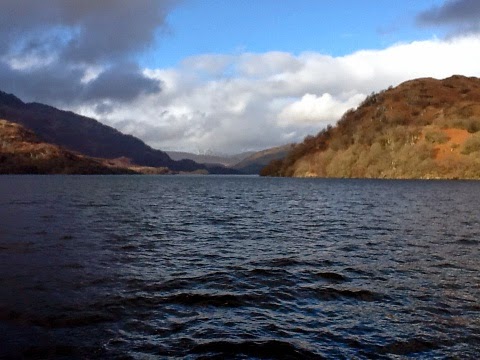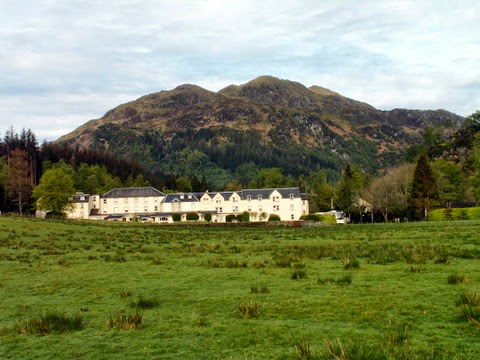The Trossachs are a lovely area of the central highlands stretching east from Loch Lomond.
" O, ye'll tak' the highroad and Ah'll tak' the low road
And Ah'll be in Scotland afore ye;
Fir me an' my true love will ne'er meet again
On the bonnie, bonnie banks o' Loch Lomond."
This well known traditional song was first published in 1841. There are various theories about the meaning but it is surely connected with the Jacobite Uprising of 1745. It is said to have been sung by a Jacobite prisoner who, together with his brother, was taken to Carlisle where the Hanoverian victors played a cruel game. The brothers were allegedly told that one of them could live whilst the other would be executed and it was up to them to decide which. Therefore the one brother is telling the other that he would 'tak the low road' being the traditional underground route which transported the soul of a dead Scot who died in a foreign land back home to rest in peace.
There is very little road access to the Loch on the eastern side although cruise boats cross to and fro.
There are several small islands in the south of the lake but they are very sparse towards the north. Just off the ferry terminal at Inveruglass there is a tiny island which was a Clan MacFarlane stronghold. There are scant remains of their castle which was sacked by Cromwell.
Across the loch from Inveruglas is Inversnaid where there is a hotel on the shore alongside a fine waterfall. This hamlet on The West Highland Way was formerly a fort to repress the MacGregor Clan and is connected by a steep twisting road going east alongside Loch Arklet to Aberfoyle.
The famous Arklet Falls on Arklet Water tumble down the rocky hillside.
Just to the north of Inversnaid is Rob Roy's Cave. This notorious outlaw and folk hero was born at Glengyle at the head of Loch Katrine and is said to have
used this cave as a hiding place.
Rob Roy MacGregor (1671-1734) was a Jacobite sympathiser who was wounded at the Battle of Glen Shiel in 1719. He became a cattle trader who fell foul of the law becoming a latter day Robin Hood folk hero type of character. He was immortalised by Sir Walter Scott in his novel Rob Roy and also in film.
Ben Lomond rises to 3194 ft.
Although the road eastwards extends to Stronachlacher at the eastern end of Loch Katrine, no roads encircle the shores.
The steam ship Sir Walter Scott has plied the loch since 1900 and of course, Scott's novel, Lady of the Lake is associated with Loch Katrine.
The Sir Walter Scott steamship leaves Stronachlacher Pier
on its tour of the loch.
Crossing the Dukes Pass from Aberfoyle, the A821 passes Loch Drunkie before continuing alongside Loch Achray in the heart of the Trossachs.

























No comments:
Post a Comment